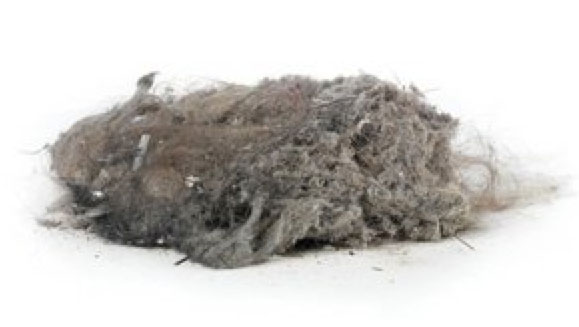Posts Tagged ‘Cement kilns’
“Statistically Significant Increase” in Risk of Dying from Cancer in Towns Near Incinerators
 You know that argument you sometimes hear about how those ecologically-minded Europeans are burning everything in incinerators and cement plants, so it must be OK to do it here? Maybe not so much.
You know that argument you sometimes hear about how those ecologically-minded Europeans are burning everything in incinerators and cement plants, so it must be OK to do it here? Maybe not so much.
In one of the most ambitious and far-ranging efforts of its kind ever attempted, the newly-published results of a 10-year study from Spain's national Center for Epidemiology looked for 33 different kinds of cancer in dozens of Spanish communities that hosted "waste incinerators and installations for the recovery or disposal of hazardous waste." They found "a significant higher risk from all cancers in towns near these industries."
Cancer impacts were greater around waste incinerators and scrap metal operations – you know like the three giant Midlothian cement plants upwind of DFW that are burning larger and larger amounts of industrial wastes and the steel mill across the street from them melting scrap cars.
Researchers used standard computer modeling to estimate what cancer rates should be in the host communities and then compared them to what they actually were.
"Excess cancer mortality was detected in the total population residing in the vicinity of these installations as a whole and, principally, in the vicinity of incinerators and scrap metal/end-of-life vehicle handling facilities, in particular. Special mention should be made of the results for tumors of the pleura, stomach, liver, kidney, ovary, lung, leukemia, colon–rectum, and bladder in the vicinity of all such installations. Our results support the hypothesis of a statistically significant increase in the risk of dying from cancer in towns near incinerators and installations for the recovery or disposal of hazardous waste."
There has never been any kind of systematic study of cancer rates around and downwind of the Midlothian cement plants. From the Texas birth defect registry we know that certain reproductive organ birth defects that are associated with pollutants known to have been released from the plants are higher than the state average in Ellis County.
This study, as well as the recent warnings of the federal Agency for Toxic Substances and Disease Registry about the public health dangers of the pollution coming from the Midlothian cement plants arrives at a time when the plants are gearing up to add plastics, car interiors, and other kinds of garbage to their lists of "fuels" that will be burned. After losing the fight to be able to burn hazardous wastes willy-nilly in cement plants, the industry is turning to industrial and municipal garbage that can produce many of the same worrisome kinds of pollution. This is what makes the EPA rules governing the emissions of the nation's cement plants – rules that are still in play – so very important.
Dust from Homes Near Cement Kilns Have 2 to 9 X More Dioxin
 Here's some information the Midlothian Chamber of Commerce probably won't be linking to at their website.
Here's some information the Midlothian Chamber of Commerce probably won't be linking to at their website.
A national research team that includes personnel from The National Cancer Institute, Colorado Sate University, the University of Washington, and the Mayo Clinic has concluded that homes within one to three miles of cement plants contain house dust that contains 2 to 9 times more Dioxins than homes not located near kilns.
Dioxins are among the most toxic substances ever tested by EPA. Dioxin is the poison in Agent Orange. It's what made both Love Canal in New York, and Times Beach Missouri Superfund Sites. It's so toxic it's measured in grams, not pounds. It's a carcinogen and an endocrine disrupter. Like Lead and Particulate Matter, there is no known "safe" exposure level to Dioxin.
40 homes across four states were chosen from an earlier non-Hodgkin lymphoma study. Samples of dust were collected from vacuum cleaner bags and test for a variety of Dioxins (the testing for Dioxins is VERY expensive and that's one reason you don't see a lot of field tests for it). Four kinds of dioxin-emitting facilities identified by EPA were in close proximity to one or more of the sampled households – cement kilns, coal plants, sewage sludge incinerators, and medical waste incinerators. Proximity to major roadways was also considered a separate source. But "high concentrations" of Dioxins were only associated with homes near cement plants. Major roads also saw "elevated" levels, but not nearly as much as kilns.
The full study was recently published in the September edition of "Science of the Total Environment."
Midlothian currently hosts six active cement kilns. There were as many as ten up until 2008. It is the largest concentration of cement manufacturing in the nation. And all of DFW is downwind of it most of the year.
As we mentioned last week, a 1999 study by Barry Commoner and his group out of Washington University in St. Louis traced Dioxins from the TXI cement plant all the way to the Arctic Circle. So don't feel safe if you think you live far enough downwind not to be affected by the Midlothian plant plumes.
For years, Midlothian residents and others have been asking the federal government for a meaningful health effects and testing protocol for determining the total load of dioxins in and around these kilns. It hasn't come. Their requests were based on published higher incidents of certain kind of birth defects in Ellis County, as well as clusters of animal health effects observed by local ranchers and breeders. And these observations started when hazardous waste burning began in the mid-1980's. EPA has stated that waste-burning kilns release more dioxin than non-waste burning ones.
So it's important to remember that the astounding high concentrations of Dioxins that were located in homes in close proximity to a a cement kiln were linked to a kiln not burning hazardous waste. Granted, we don't know what kind of "non-hazardous wastes" it might have been burning, but the results begs the question about how much higher Dioxin levels might be in a place like Chanute, Kansas where Ash Grove's kiln is still burning hazardous wastes.
And it also once again points out why we can't be complacent about the kilns in Midlothian just because they quit burning the worst of the worst toxic wastes. Even without that practice, they pose an on-going clear and present danger to the region's public health from just their "routine" emissions. Now that all of them have or want permits to burn plastics and garbage, you could reasonably expect to see an increase in Dioxins and other forms of more exotic pollution spewing out of their tall smokestacks. And you know why their so tall don't you? So that the pollution they're releasing travels further downwind.
